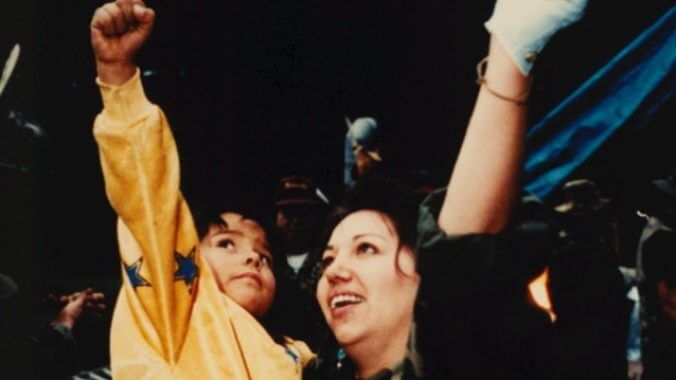Kanehsatake: 270 Years of Resistance Remains Revolutionary Indigenous Filmmaking

It would be a mistake to assume that the presence of neo- or post-colonialism means classic colonialism has ended, far from it. Even in this supposedly enlightened and liberal age, governments still encroach upon Indigenous lands and peoples, continuing a project of removal and disappearance that has been going on for centuries.
The task for any documentarian trying to convey the colonial struggle is to make the past feel alive and active in the present. Settler historians record colonial conflicts as “incidents” in their periodized history as they try to sell us on the idea that events have endings. But for the decolonial documentarian, events resonate, stack and compound on one another.
One such artist keenly aware of how documentary filmmaking engages with the colonial project is American-Canadian director Alanis Obomsawin. As a member of the Abenaki tribe, Obomsawin has endeavored to tell stories about Indigenous histories and worldviews through her films. Her most widely known film, Kanehsatake: 270 Years of Resistance, has been given an impressive new 30th anniversary Blu-ray release that thoughtfully celebrates the resilience of a people and an extraordinary director.
Obomsawin’s seminal work chronicles the colonial land grab at the center of the 1990 Oka Crisis, which primarily took place near Oka, just outside of Montreal. Provincial officials and private companies ignited the flames of conflict when they decided to encroach on Mohawk land, called Kanehsatake, to extend a luxury apartment complex and its golf course. No Mohawk people were brought to the business table. When the court and city officials made it clear they were going to continue their expansion and were unafraid to move the Mohawk people out by force, Indigenous peoples from around the world came to Oka and Kanehsatake to lend their support on the barricade and give up their lives if necessary to preserve Indigenous identity and territory.
But this dispute goes back far further than 1990. As the title indicates, Kanehsatake is a story about the 270 years leading up to the crisis. Through cleverly designed animated slides, Obomsawin flips the content of the traditional ethnographic documentary and deftly reminds us that this is an ongoing history of displacement and disappearance. Non-Indigenous people have rendered Indigenous people and history in only two dimensions throughout most of the history of ethnographic films, often drawing Indigenous people to fit their own image. Obomsawin fills in this historical background with a vibrant story of conflict and courage.
-

-

-

-

-

-

-

-

-

-

-

-

-

-

-

-

-

-

-

-

-

-

-

-

-

-

-

-

-

-

-

-

-

-

-

-

-

-

-

-








































